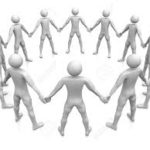Adult Children and Aging Parents
Taking a News Fast for Mental Health
 Mental Health and the News
Mental Health and the News
Something I see more and more recently is how troubled and even distraught many of my clients are about the state of our country. When I ask them about how much they are watching the national news, many of them say, “Every morning and every evening.” What I ask them how it makes them feel they report “Terrible! I’m so upset (angry, frustrated, disappointed, fearful) about what is going on!”
These folks may be rimobolan Republicans, they may be Democrats or no party affiliation. It’s not about political leanings as much as it is about their memories of how various politicians they admired were once able to communicate across party lines to “put country first and get things done”. It greatly 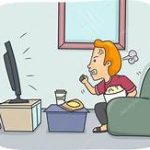 concerns my clients that this bipartisan spirit does not seem to be happening anymore. They get so mad about it that their blood pressure and overall stress levels are not healthy. This is the situation for many Americans now, young or old or in-between.
concerns my clients that this bipartisan spirit does not seem to be happening anymore. They get so mad about it that their blood pressure and overall stress levels are not healthy. This is the situation for many Americans now, young or old or in-between.
My senior clients, many of whom are retired, are educated, hard-working, middle class Americans who care about our country. They are also facing plenty of issues related to aging, illness, having less energy, figuring out their relationships with adult kids and grandkids, their identities and value in their older years, the big existential questions of life, and yes, oftentimes depression and anxiety. The news media these days can make them sick!
So, we have been experimenting with various ways they can try taking a “news fast”. One woman in her 80’s reported that she stopped watching the news on television where the sound bothered her so much – the music, the strident tones of the the newscasters voices and the video graphics. She has found that, for her, *reading* the news in small, manageable bites is fine. She stays current with anything important and can read the words without the over-stimulation of noise.
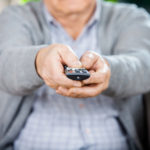 Others have stopped watching or reading altogether for a few days at a time to see how this impacts their spirit of well-being and mood. Another client is being creative by playing around with getting her news through the late night comedy shows and via short comedic clips on YouTube. She reports that she feels much calmer and that laughing more feel great!
Others have stopped watching or reading altogether for a few days at a time to see how this impacts their spirit of well-being and mood. Another client is being creative by playing around with getting her news through the late night comedy shows and via short comedic clips on YouTube. She reports that she feels much calmer and that laughing more feel great!
The point is that constant drumbeat of 24/7 cable news shows, along with media hungry politicians and pundits, can seriously contribute negatively to people’s emotional health. Take a break from it to see if you sleep better or just feel a little less down. Finding some balance that works for you may not be the same as what works for your friend or family member. The important thing is to find that balance and to remember that the good things that happen in life tend not to be reported in the media and that focusing on the good things all around you is a great help to your mental health.
So… consider taking a “News Fast” from time to time and see how you feel! The news will still be there when (if) you come back to it!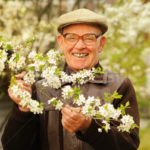
Successful Aging Takes a Team!
Successful Aging Takes A Team!
Let’s talk about why it’s critical to their quality of life to have a strong support team around seniors who are growing older.
Why?
Because I see so many older people in my private practice who face, for example, situations where they are grappling with:
- family members or loved ones with very strong opinions about what is best for them – opinions danabol that may or may not be informed and wise
- *no* family members or close friends at all to advocate for them
- a primary care physician who is prescribing medications but not following them in after-care. What is known as the “diagnose and adios” routine.
- a specialist or two who is also prescribing – say for instance a cardiologist or endocrinologist – but who is not tracking the interaction of *all* of the medications involved
- a psychiatrist who may be also be treating and prescribing psychiatric medications
- possibly a nutritionist, alternative health practitioner or two prescribing supplements, vitamins and minerals which may all be fine but which also carry side effects that can contribute to mood problems.
Way more often than not, there is very little, if any, communication and coordination amongst the health professionals. This coordinator function may have been done in the past by the primary care doc who managed the broad perspective overview of how each of his patients were doing. But nowadays primary docs are under so much time pressure in their practices that they just do not have time take on this role.
In order to build that coordinated team which will support an individual’s successful aging, it takes someone stepping into the role of being a skilled ADVOCATE. A person who knows how to coordinate effective communication amongst team members and who is in charge of reaching out on behalf of the patient to represent their concerns. Someone who can help the patient communicate their concerns and questions to other team members, and who also helps the patient remember the answers and instructions of doctors. Team members need to work in concert with each other, supporting the various lens through which each patient is viewed.
All of this process needs to be done with the utmost RESPECT for each patient where the patient has TRUST in the advocate that he or she is representing the wishes of the patient towards the goal of the best possible quality of life at any stage.
Gerontologists and mental health professionals who understand the importance of building good communication and coordination amongst care teams can be invaluable to the patient and family. Sometimes, it is care managers who provide this role, sometimes it’s an adult child, and sometimes it’s gerontological counselor.
Whoever it is that takes the lead in this role, a support team that is identified, built, coordinated and in good communication, will result in a patient who is much more likely to thrive and much less likely to fall through the cracks.
This is the health care situation for older people in our country today. Just the facts. And totally doable to navigate through it successfully. With help. With a solid, caring team.
Octogenarians Worrying About America
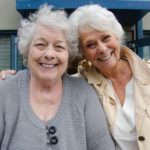 I am finding, as I continue my counseling work with older clients – those in their 80’s in particular – that there is a concern they express about the state of our U.S. government. These people have been raised with a sense of decorum, a respect for one’s character, integrity and good manners. My clients are a small pool so I don’t have a large study going on, however, their views make sense to me. That is, that the way our government behavior seems to be devolving into an angry, polarized, rude, dishonest style of treating each other and that this is something they have not seen to this degree in our country.
I am finding, as I continue my counseling work with older clients – those in their 80’s in particular – that there is a concern they express about the state of our U.S. government. These people have been raised with a sense of decorum, a respect for one’s character, integrity and good manners. My clients are a small pool so I don’t have a large study going on, however, their views make sense to me. That is, that the way our government behavior seems to be devolving into an angry, polarized, rude, dishonest style of treating each other and that this is something they have not seen to this degree in our country.
They express concern about this, yes. They worry about where the government is headed. They remember times when Democrats and Republicans disagreed heartily yet were able to work together, spend time together, even be friends despite policy differences.
The anger and polarization leads them to wonder whether our democracy can survive this. My octogenarian clients also talk about other major issues like climate change and health care and tax reform. They don’t all agree on what is to be done about these things – but they watch the behavior of America’s government and shake their heads.
They watch our president’s behavior towards leaders of other countries. Again, they were raised with the values of being courteous, polite and kind as well as strong. They are embarassed and sad that America is losing its standing in the world. Remember, this is the World War II generation – the “greatest generation” as Tom Brokaw labeled them. They have been through many years of watching American men and women fight and give their lives for these values, these truths that we hold as being “self-evident”. These are people who have studied *and lived* history. There are veterans amongst them as well.
Many of the baby boomer clients I see – in their 60’s and 70’s – are also afraid and worried. They tend, in general, to still be busy, though, with working, watching grandkids, traveling, hobbies and other distractions which take up much of their contemplative time. It is the older generation I find that is expressing the most grave and deep concern about our country.
Others may say “it was ever thus”, i.e. that older generations worry about younger generations. Although my older clients did report concern about issues during the previous administration, they are much more worried at this point.
Shouldn’t we be listening to our elders more? They remember the autocratic regimes of Hitler, Stalin, Mussolini and others. They remember the warning signs, the lead-up to widespread wars. They are heartened that Dan Rather, Carl Bernstein, many historians and people who served during the Watergate hearings are being brought out to educate and remind about those times, and to share their experiences and perspectives. Much more of that is needed.
Solutions to The Problem That Has No Name
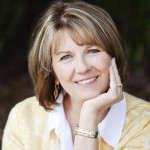 Here are, as promised, some tools that boomers are using to help keep their spirits afloat as they navigate the transition from their 60’s into their 70’s. They are simple and we mostly know about them. Putting them into regular practice is the key towards feeling better.
Here are, as promised, some tools that boomers are using to help keep their spirits afloat as they navigate the transition from their 60’s into their 70’s. They are simple and we mostly know about them. Putting them into regular practice is the key towards feeling better.
- Mindfulness, contemplation and loving kindness practices
Sitting still and paying attention. Daily. That is the gist of mindfulness practice. It doesn’t have to be for a set length of time. One minute is fine. What tends to happen is that if you can stop the momentum treadmill of everyday life even for a moment by stopping, sitting up with good posture and paying attention to your breath for one minute, you might find yourself sitting for more than one minute. The hardest thing is simply to make the effort to stop. This can be pulling over on the side of the road, in a parking lot, in your office, at your home, wherever. The word for mindfulness in an Japanese is also the word for heartfulness. This is where loving kindness practice comes in. Sitting quietly with awake presence includes paying attention to our feelings and not judging them. Letting them be, and pass by. This is a big long topic but keeping it simple, it’s about being kind towards yourself before you can begin to be truly kind to others. Repeating the simple Metta Loving Kindness mantras can be a place to start: “May I be safe, May I be happy, May I be healthy, May my heart be filled with loving kindess.”
- Exercise – aerobic; Yoga
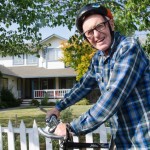 Exercise is key, we all know that. Again, even a few minutes can make a big difference both in physical health and in mental health too. A short walk around the block. A few minutes on a stationary bike. Dancing to some music on the radio. A Youtube gentle yoga video to help build muscle but also to stretch your muscles out. Most people find the most challenging part of this is getting started. So, starting by just committing to 5 or 10 minutes a day is a great way to get yourself going. Don’t start with too much of a commitment so that you give up!
Exercise is key, we all know that. Again, even a few minutes can make a big difference both in physical health and in mental health too. A short walk around the block. A few minutes on a stationary bike. Dancing to some music on the radio. A Youtube gentle yoga video to help build muscle but also to stretch your muscles out. Most people find the most challenging part of this is getting started. So, starting by just committing to 5 or 10 minutes a day is a great way to get yourself going. Don’t start with too much of a commitment so that you give up!
- Understanding the link between nutrition and mental health
More and more research is coming out about the links between good nutrition and good mental health. We are what we eat, it’s true. So many of the neurotransmitters that govern our moods are produced in the “gut”. Paying attention to what we eat – backing down the processed carbs and the white sugar is paramount to good health. Complex carbs, protein, vegetables and fruit. Simple. Fortunately we live in a day and age when good quality organic foods are available. Counting calories is an important thing to watch too. You can eat good quality foods but eat too much of them. Paying attention to your weight and aiming for a strong body are things many of our grandparents and parents knew. We need to pay attention to them too as we get older.
- Giving back to your community; volunteering
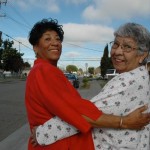 It’s not a surprise that helping others makes us feel good. People that survey volunteers at various causes always say that people report that they feel better than the people they help! As we get older and probably are retiring when we can :), people sometimes feel like now what? Traveling and doing hobbies and socializing are great – but so is having purpose and helping out our friends, family and community.
It’s not a surprise that helping others makes us feel good. People that survey volunteers at various causes always say that people report that they feel better than the people they help! As we get older and probably are retiring when we can :), people sometimes feel like now what? Traveling and doing hobbies and socializing are great – but so is having purpose and helping out our friends, family and community.
- Consciousness raising support groups
Since we are talking about a “problem that has no name”, being in a supportive peer group where we can compare notes, commiserate, exchange ideas, and yes, laugh!, can be sooo healing. There are meditation groups where people have discussions afterwards, support groups for caregivers, church/temple groups, groups that have to do with aging such as AgeSong in the Bay Area, and more. Many agencies that serve older people offer groups of various kinds, as do community centers. You might have to try one or two before you find one that feels just right.
- Nature – renewing a commitment to spending time outdoors
 There is a term in Japanese that translates as “forest bathing”. It turns out that trees release not only oxygen but also chemicals that contribute to the overall health of the forest. And, it turns out, these chemicals are very good for us humans! So, try to get out in nature, in the forest, or on the mountain, or by the ocean or river, or in the park. Anywhere where you can “forest bath” – meaning to simply stop and immerse yourself in the beauty of natural surroundings.
There is a term in Japanese that translates as “forest bathing”. It turns out that trees release not only oxygen but also chemicals that contribute to the overall health of the forest. And, it turns out, these chemicals are very good for us humans! So, try to get out in nature, in the forest, or on the mountain, or by the ocean or river, or in the park. Anywhere where you can “forest bath” – meaning to simply stop and immerse yourself in the beauty of natural surroundings.
- Counseling
Going to see a therapist who understands the journey of being in middle age and older years can be so healing and supportive. Any therapist might be helpful but particularly someone who understands that the challenges and opportunities and transitions we encounter in this adventure of growing older – can be very helpful in terms of you being able to understand what is common and normal in this part of your life. Understanding that you are not alone – you’re not doing something wrong most of the time – can feel like an unburdening. Yes you still have to figure things out and there are challenges. But the self-criticism, self-blame, and shaming can be *greatly* reduced with the power of a little education about what are called the “developmental tasks” of this age and the common landmarks of this territory. Plus, of course, learning about the many ways people like you are successfully dealing with a variety of issues is a huge help.
- Using the Arts to reconnect with Self
Re-exploring one’s love of the Arts can be so healing at this time in your life. Reading, writing, journaling, reading and writing poetry, playing a beloved instrument, learning how to play an instrument for the first time, taking a  class, learning to dance, going to art exhibits, singing in a group, going to concerts, enjoying doing crafts, arranging flowers… – all of these feed the soul and, now that you may have more time on your hands, are a good way to relax and keep your mind engaged in beauty rather than on problems. Winston Churchill, for instance, suffered greatly from depression – what he called the Black Dog. Painting, for him, was a tremendously helpful therapy.
class, learning to dance, going to art exhibits, singing in a group, going to concerts, enjoying doing crafts, arranging flowers… – all of these feed the soul and, now that you may have more time on your hands, are a good way to relax and keep your mind engaged in beauty rather than on problems. Winston Churchill, for instance, suffered greatly from depression – what he called the Black Dog. Painting, for him, was a tremendously helpful therapy.
Please feel free to email me if you have questions or comment below.
Bringing Balance into Our Lives as We Grow Older
 As we get older, we are exposed to increasing loss and stressors. These can be deaths of loved ones and family members. Sometimes it’s illness, it may be chronic pain. Or watching people we care about encounter difficulties and running into more problems ourselves.
As we get older, we are exposed to increasing loss and stressors. These can be deaths of loved ones and family members. Sometimes it’s illness, it may be chronic pain. Or watching people we care about encounter difficulties and running into more problems ourselves.
Joan Erikson, the renowned psychologist and wife of psychologist Eric Erikson, talked about needing to let go of things as we climb up the hill of getting older. Old habits, old concerns, old worries, old ways of being – we have to start looking at those and discarding those that have become too heavy to continue to carry. She said:
“Everybody says it’s a good idea to lighten your load. It’s like walking up a hill. And then you realize that the load that you’re carrying is not worth the trouble, it’s not worth the strength that it takes to keep it with you. And you begin to just gladly drop this bit here and this bit here and be freer to get up that steep hill.”
This “purging” effect as one of my therapist friends calls it, involves letting go of a range of things. It can be not eating as much and therefore extra weight. It can be possessions which we have accumulated and carried around with us in our homes. Those possessions which seem to multiply by themselves and we look around finding ourselves surrounded by too many things. Time to let go!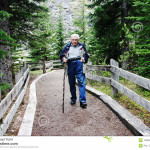
Sometimes it’s relationships we are looking at and letting go of. Old friends who were wonderful in one season of our lives may not feel nurturing or right anymore. This is not a blame and shame process. This is normal. Friends, colleagues and associates come and go. “Culling” and honing and winnowing are all practical terms having to do with earth and sometimes farming. They are good metaphors for how we are gardening through our lives.
To extend the metaphor, plants need room to grow and thrive. If they, or we, are too crowded, our growth is stymied. How much room we need as individual humans is a very personal journey and decision. It may differ at various times of our lives because numbers of relationships, too, have seasons.
A coping mechanism mentioned by many mental health practitioners and mindfulness teachers is bringing more of our attention to positive things in our lives. Big things, but also the small little day to day, hour to hour, minute to minute things that delight us. And by delight, I mean that bring light into our hearts. It might the sight of a beloved child, pet, the smell of a sweet sweet rose, the taste of something delicious, the feel of the warm sun on our face, the rays of sunshine filtering down through tall trees, the sound of the ocean, etc.
Those enjoyments can help bring us balance in and of themselves, and *especially* so when we pause and savor them for more than a second. In fact, brain research has shown that it takes the brain at least *10 seconds* to take a momentary experience and be able to register it into memory. 20 or 30 seconds is better.
So, for starters, a simple thing to do to move towards balance is to take the time to notice positive experiences in our lives, note them with all of our senses where possible, and stay with them for a few seconds. A regular practice of this will attune our brain to noticing more of these experiences and help bring balance into our perspectives and lives. Simple and powerful at the same time.
A New Year & A New Perspective
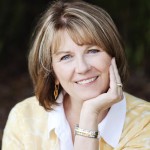 A New Year & A New Perspective
A New Year & A New Perspective
Dear friends and colleagues in the healing arts,
2015 presented me with some interesting challenges. After the death of my beloved mother and the near death and continued illness of my husband, I wondered how we healers can continue to serve our patients when we ourselves are in the midst of tough times. Maybe some of you have come up against this question too.
What I discovered is, as songwriter Leonard Cohen writes, “The birds they sang at the break of day. Start again I heard them say. Don’t dwell on what has passed away or what is yet to be. Ring the bells that still can ring. Forget your perfect offering. There is a crack in everything. That’s how the light gets in.”
It’s this last part that has surprised me. What an unexpected gift is the grace and light that can emerge out of adversity. What I am learned continually deepens both my work and my home life.
As we get older, we find ourselves adding to our toolkit of life skills. Mindfulness tools have reentered my life and work in a big way. And so has my intention to reach a much wider audience through teaching nationally about conscious aging. The need and demand for navigation help is so great as the boomer generation enters the unfamiliar terrain of older life.
If you have friends, family or patients in these populations below who you think I might be able to help or if you have questions yourself, please feel free to reach out anytime:
- People in their 50’s, 60’s and 70’s waking up to their own sense of aging – often through illness or other changes in themselves or their loved ones. They seek answers, solutions, and guidance.
- Adult children of aging parents who feel confounded and frustrated about how to best help their parents through a myriad of difficult circumstances. They are the sandwich generation with aging parents, children and often grandchildren too.
- Families where adult children and aging parents need to and want to come to some new understandings and find a closeness now to the extent they can while they can still can.
- People in their 80’s and early 90’s who are facing their last years with all that that entails – memories, regrets, fears, peace and contemplation – all healthy parts of this stage of life. Having a genuinely caring nonjudgmental skilled listener is so valuable.
You might already know that there are very few psychotherapists in Marin who have advance training in gerontology. With my expertise in the fields of aging, communication, business, medicine and psychology, I am uniquely qualified to help your midlife and older patients, friends and family.
My offices are in Mill Valley and San Anselmo. Telephone appointments are also available for people who do not live close by. I provide a free initial phone consultation. And if I can’t help, I can often steer people to other beneficial resources.
With warm wishes for a peaceful 2016,
Nancy Rhine, MS, LMFT, CPG
415-378-6577
nrhine@gmail.com
Starting with the Traditional (in housing)
Before I start to take a look at and write about the myriad of creative housing solutions that are cropping up these 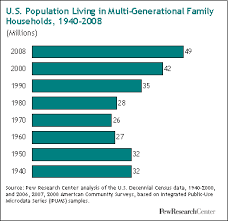 days for boomers and older people, I thought I’d give a brief nod to the traditions that have come before these modern days. The oldest traditional housing for older people is probably: living with family. And, now, the number of multigenerational families is on the rise again.
days for boomers and older people, I thought I’d give a brief nod to the traditions that have come before these modern days. The oldest traditional housing for older people is probably: living with family. And, now, the number of multigenerational families is on the rise again.
More and more people will be faced with that choice or are already living that scenario today because a) they want to do that, and/or b) the elders do not have the money to be able to afford live in their own homes and/or pay for their own in-home caregivers or live in residential assisted living locations. This choice is not without drawbacks. Sometimes older people are lonely living with adult children who are working and grandchildren who are away at school and with friends all the time. Sometimes the generations do not get along well. Older people can also feel they have no privacy in this setting or sometimes they feel like they do not want to be a burden to their adult children.
Nonetheless, this has been the way for centuries or millenia for older people and it’s a scenario that is coming back.
 In the interim, things took a different turn in the late 1950’s with Del Webb and his construction and promotion of the Sun City retirement community. With Del’s photo on the cover of Time magazine in 1962, there was an accompanying explosion of growth of these kinds of communities across the country in the decades to come. For the past half a century, his model of aging has essentially been the plan for millions middle class seniors. That is that they would retire at age 65 and move into one of these kinds of retirement communities: independent living apartments, planned communities with a variety of housing choices for seniors 55 and older, assisted living facilities, and eventually skilled nursing facilities.
In the interim, things took a different turn in the late 1950’s with Del Webb and his construction and promotion of the Sun City retirement community. With Del’s photo on the cover of Time magazine in 1962, there was an accompanying explosion of growth of these kinds of communities across the country in the decades to come. For the past half a century, his model of aging has essentially been the plan for millions middle class seniors. That is that they would retire at age 65 and move into one of these kinds of retirement communities: independent living apartments, planned communities with a variety of housing choices for seniors 55 and older, assisted living facilities, and eventually skilled nursing facilities.
When faced with these choices and there is plenty of time, people can leisurely explore alternatives. When, however, as people are doing more these days, they stay living in their own homes longer and then there is a crisis which precipitates a move to an assisted living or board and care type situation, how do they, or often their adult children, find out information about alternatives and options?
One assisted living social worker who had worked for 28 years at a local retirement community told me the average move-in date when she first started at been about 75 years old. By the time she retired, the average move-in date was more like 85. People are staying longer in their own homes.
Back to the answer of where to find answers regarding options when living independently is no longer viable. Most counties have what’s called a triple A or Area Agency on Aging. They are often a good place to start for education about senior housing options. They often have published booklets describing housing resources in their county. And they can direct you to more print listings. The problem with print resources is that they become out of date quiet quickly in the shifting terrain of senior services.
You can go online and search in your county, too. You can look for reviews. You can then call the places that look good to you, weed out the ones you don’t like and make appointments to go visit the ones you think look appropriate.
 In my county – Marin County – north of San Francisco, I like a web service/site called Lucille’s List . The two women who founded this service did so because they had had such a hard time finding good assisted living homes for their aging mother and grandmother. You can search Lucille’s List by a variety of search criteria. And the information tends to be more up to date. They have a matching service where you can type in location, the kinds of services you’re looking for, a price range, etc and they will give you the results. It’s a useful tool.
In my county – Marin County – north of San Francisco, I like a web service/site called Lucille’s List . The two women who founded this service did so because they had had such a hard time finding good assisted living homes for their aging mother and grandmother. You can search Lucille’s List by a variety of search criteria. And the information tends to be more up to date. They have a matching service where you can type in location, the kinds of services you’re looking for, a price range, etc and they will give you the results. It’s a useful tool.
Some people turn to a geriatric care manager who typically charges about $150/hour and up to look into your specific housing needs and the solutions available in your area. They may charge an initial set fee for assessment and then a lower ongoing fee to continue to work with you.
Next week, I’ll start to get into alternatives to the living with your kids choice and the moving into a retirement/assisted living community choice.
Soaring Numbers of Adult Children Caring For Aging Parents
 According to US News & World Report: “The number of people taking care of an aging parent has soared in the past 15 years. In 1994, only 3 percent of men and 9 percent of women helped provide basic care for a parent. Fifteen years later, 17 percent of men and 28 percent of women provided such care.”
According to US News & World Report: “The number of people taking care of an aging parent has soared in the past 15 years. In 1994, only 3 percent of men and 9 percent of women helped provide basic care for a parent. Fifteen years later, 17 percent of men and 28 percent of women provided such care.”
This article also speaks to the importance of creating a sound financial plan to manage assets for sustainability through older life – knowing where you stand money-wise informs your decisions about caregiving, medical, emotional support and other resources. 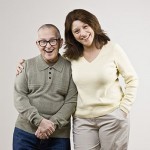
So often I see older adult clients who don’t understand what assets they have. As a psychotherapist, I am not a financial adviser. I refer out to trusted local financial planners who work honestly and diligently for clients who have a lot of money and clients who have worked hard but don’t have much extra.
It seems obvious but somehow this gets lost in the shuffle: without knowing exactly how much you have, it isn’t possible to intelligently plan how much you can spend on a personal assistant to help with things like bill-paying, organizing paperwork, balancing checkbooks, driving when you are unable to drive anymore, running errands, doing some light housecleaning, maybe some light meal prep – all of these kinds of tasks that keep us thriving and living in our own homes when we are getting to the place where we can’t do all of these things ourselves.
Another point I feel it’s important to point out is that once you know what you have to work with, there is a WIDE range of creative and available ways to organize care. The range is determined by the spectrum of being able to pay for all outside help to divvying up all the caergiving tasks amongst the adult children whether they are living close by or far away to a combination of those. You have to know where you stand before you can strategize!
Read more about it in The Jerusalem Post article entitled “Your Investments: When Children Take Care of Elderly Parents”.
